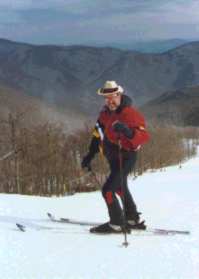 |
 |
 |
 |
 |
 |
||||
 |
||||
 |
 |
 |
 |
 |
 |
 |
 |
||||
 |
||||
 |
 |
|
Whenever you see geese heading south for the winter flying along in V formation, you might consider what science has discovered as to why they fly that way. As each bird flaps it's wings, it creates an uplift for the bird immediately following. By flying in V formation, the whole flock has at least 71% greater flying range than if each bird flew on it's own. People who share a common direction and sense of common purpose can get where they are going more quickly and easily because they are traveling on the thrust of one another. When a goose flies out of formation, it suddenly feels that drag and resistance of trying to go it alone and quickly gets back into formation to take advantage of the lifting power of the bird in front. It is harder to do something alone than together. When the lead goose gets tired, it rotates back
into the formation, and another goose flies point at the
head. The geese in formation honk from behind to encourage those up front to maintain their speed. What do we say when we honk from behind? We need to make sure our honking is encouraging and not discouraging. Finally, and this is important, when a goose gets sick or wounded and falls out of formation, two other geese will fall out with that goose and follow it down to lend help and protection. They stay with the fallen goose until it is able to fly or it dies, and only then do they launch out on their own, or with another formation to catchup with their flock. If we have the sense of a goose, we will stand by our colleagues and each other in difficult times and in the good times. By Angeles Arrien |

 |
| Click on my picture to read other articles I have written |  |
